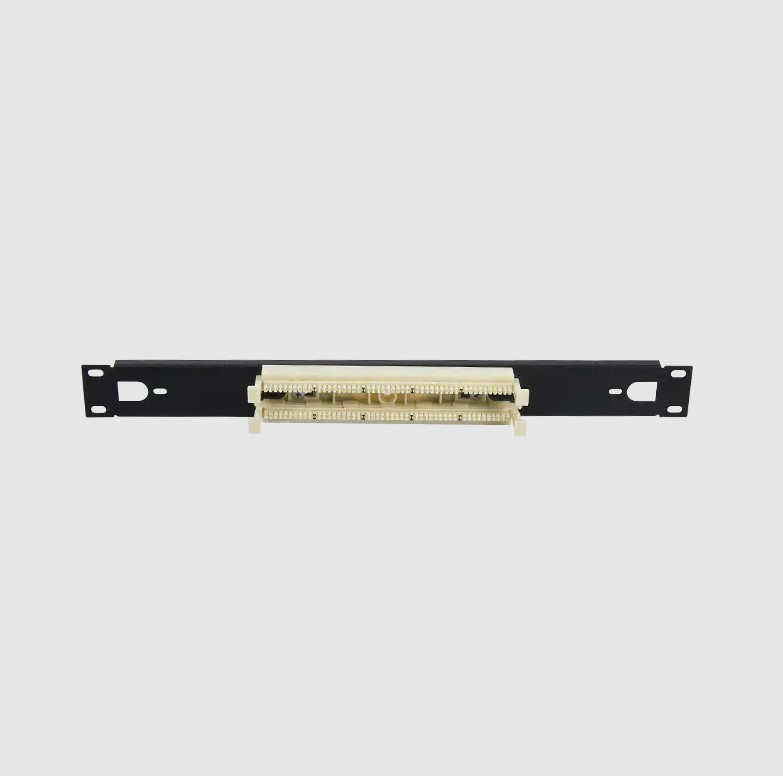In the complex network infrastructure of modern enterprises and data centers, a seemingly simple component plays a crucial role: the 110 Wiring Block (also often called a 110 Wiring Block).
Content
I. What is a 110 Wiring Block?
A 110 Wiring Block is a high-density modular connection hardware used to manage and organize twisted-pair cabling in telecommunications or data network cabling. It derives its name from the "110-type" connector block and crimping tool standard it uses.
It is a fixed interface conversion platform: one side connects to horizontal cables (such as CAT5e and CAT6) from various workstations via specialized crimping tools (such as 110 crimping tools), while the other side connects to network switches, telephone systems, or other devices via patch cables.
II. Analyzing the Core Uses of a 110 Wiring Block
So, what is a 110 Wiring Block used for? It plays a crucial role in the following areas:
1. Centralized and structured cabling management
A 110 Wiring Block is the cornerstone of a structured cabling system. It consolidates hundreds of disparate network cables into one or more rack units, allowing network administrators to clearly and efficiently organize and manage the physical connections of the entire network from a single location. This centralized management greatly simplifies troubleshooting and routine maintenance.
2. Providing Flexible Network Connectivity and Scalability
Network changes are common. Using 110 Wiring Blocks with patch cords allows administrators to quickly and flexibly change the connection destination of any port. For example, switching a computer from one department's network to another can be done simply by replacing a patch cord, eliminating the need to re-route or patch cables. This is crucial for frequently changing office environments. Furthermore, the modular design ensures easy future upgrades and port additions.
3. Protecting Expensive Network Equipment Interfaces
Horizontal cables (cables extending from wall outlets to patch panels) are typically permanently installed. Frequent plugging and unplugging of these cables can wear out the ports of high-value equipment like network switches. 110 Wiring Blocks act as a buffer between these permanent cables and active equipment. The use of patch cords ensures that all plugging and unplugging operations occur over inexpensive, easily replaceable patch cords, extending the lifespan of core network connectivity equipment such as switches.
4. Ensuring Signal Integrity
High-quality 110 Wiring Blocks utilize standardized connection technology and high-quality conductive materials to minimize signal attenuation and crosstalk, ensuring stable data transmission and high-bandwidth performance. This is particularly important for data centers that handle large amounts of data and latency-sensitive VOIP (Voice over Internet Protocol) systems.
III. Differences and Connections with Related Products
In the cabling industry, 110 Wiring Blocks are not the only option. For example, Krone patch panels, Category 6 patch panels, and Category 5e patch panels are all related products or standards. The 110 model's advantage lies in its high density and proven cable-bonding technology, making it a standard feature of many large-scale telecommunications cabling projects. Modern cabling systems often select 110 Wiring Blocks or modular patch panels based on the cable type used (such as CAT6).
A 110 Wiring Block's function goes beyond simply connecting cables. It is the "nerve center" of modern network infrastructure, ensuring efficient operation and long-term reliability of the network by providing structure, flexibility and protection.
For product options and specifications related to the 110 Wiring Block, consult manufacturers' datasheets and system designers to ensure compatibility with your cabling standard and network requirements.



 Español
Español عربى
عربى













